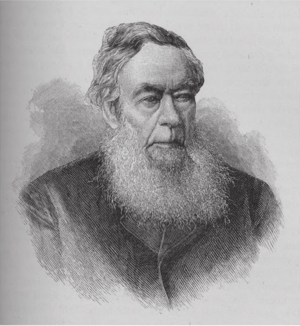George Leslie (Upper Canada) facts for kids
Quick facts for kids
George Leslie Sr.
|
|
|---|---|
 |
|
| Born | 1804 |
| Died | 1893 (aged 88–89) |
| Nationality | Canadian |
| Occupation | Horticulturist |
George Leslie Sr. (1804–1893) was a skilled gardener from Scotland. He became a successful plant seller and a magistrate (a type of judge) in Upper Canada. Today, a part of Toronto called Leslieville is named after him.
Contents
The Life of George Leslie
Early Life and Moving to Canada
George Leslie was born in Scotland in 1804. He moved to Upper Canada (which is now Ontario, Canada) with his parents and siblings. They arrived around 1824 or 1825. The family settled in a place called Streetsville, which is now part of Mississauga. They lived in a log house there.
Becoming a Gardener and Plant Seller
In Scotland, George Leslie worked as a gardener. When he came to Upper Canada, he continued this work. He gardened for important people, like Bishop John Strachan and Chief Justice William Campbell.
Later, George Leslie started his own plant nursery. A nursery is a place where plants are grown and sold. His nursery was located east of what was then the city of Toronto. In 1834, he helped start the Toronto Horticultural Society. This group aimed to promote gardening and plant growing.
Growing His Business
In 1836, George Leslie got married. He also opened a store in Toronto. This store was special because it was the first in the city to be lit by gas. This was a new and exciting technology at the time, and many people came just to see the gas lights.
His Toronto store had a small plant section. But in 1845, Leslie started a much larger nursery. It was located near the street that is now called Leslie Street. This nursery grew to be about 150 acres (60 hectares) in size. It was known as the biggest nursery in Canada at that time.
Leslieville and Later Years
A community began to grow around George Leslie's large nursery. This area became known as Leslieville. It soon had its own post office and a railway station. In 1853, George Leslie was given the important job of a magistrate. This meant he helped make decisions in local legal cases.
Later in his life, George Leslie passed his nursery business to his children, George Jr. and John Knox. They eventually divided the large property into smaller pieces of land to be sold.

